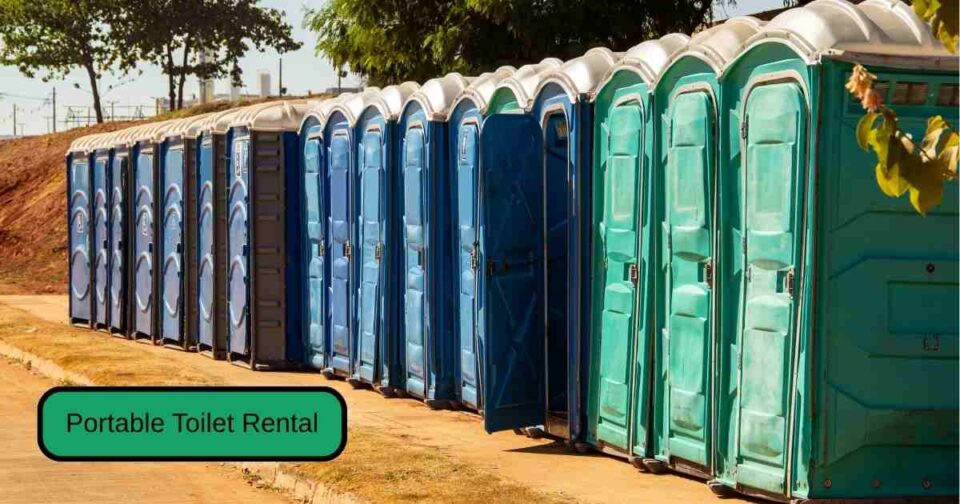Last Updated on August 1, 2025 by Admin
Planning a successful construction project or large-scale outdoor event takes more than just materials and manpower, it requires thinking through the essentials that keep everything running smoothly. One of the most overlooked yet critical components is portable toilet rental. From compliance with health and safety regulations to maintaining worker productivity and public comfort, sanitation should never be an afterthought. Whether you’re managing a long-term job site or hosting a weekend festival, having the right number and type of portable restrooms can make or break the experience for everyone involved.
So, what does smart toilet planning look like in 2025? Let’s break it down.
Table of Contents
Why Planning Ahead Matters More Than Ever
The portable sanitation industry, like many others, has faced fluctuations in supply chains, rising costs, and increased demand. With more outdoor events, construction growth, and tighter health regulations post-pandemic, early booking is now essential.
Here’s why advance planning should be part of your prep:
- Avoid last-minute shortages during peak season
- Secure better rates before seasonal price hikes
- Ensure compliance with evolving health and safety standards
- Customize your rental package to match your project size and scope
1. Understand the Needs of Your Project
Start with the basics:
What type of project is it?
- Construction site (commercial, residential, roadwork?)
- Outdoor event (concert, festival, fair?)
- Remote work location (agriculture, energy, disaster response?)
- Long-term facility need (school renovations, temporary office setups?)
Each of these has different usage patterns, durations, and accessibility requirements.
2. Calculate the Right Number of Units
You don’t want too few units causing long wait times and complaints—or too many that waste your budget.
Here’s a general rule of thumb:
- Construction sites: 1 toilet per 10 workers for a 40-hour workweek (OSHA minimum)
- Events (4–6 hours): 1 toilet per 50–75 people
- Events with food/alcohol: Increase unit count by 15–20%
- Multi-day or overnight events: Add more units and include handwashing stations or restroom trailers
3. Plan for Duration and Servicing
The length of your project impacts the type of toilet unit you’ll need and how often it should be serviced.
- Short-term projects (1–7 days) may be fine with standard units and a single cleanout.
- Long-term projects (weeks/months) require a cleaning schedule (usually weekly or biweekly).
- High-traffic locations may need daily or even twice-daily service.
Also, consider seasonal conditions. Cold weather may require winterized units. Summer heat? Increase cleanings to combat odor.
4. Consider Accessibility and Amenities
Regulations and best practices require accessible units and hygiene stations:
- ADA-compliant units for accessible needs
- Handwashing stations with soap and water
- Hand sanitizer dispensers for high-traffic or remote areas
- Luxury restroom trailers for high-end events or VIP areas
If your site serves diverse demographics or is open to the public, don’t skimp on these essentials, they reflect your professionalism and care for users.
5. Location, Layout, and Placement
When choosing where to place your units:
- Ensure easy access for users without disrupting workflow or foot traffic
- Allow space for service trucks to access and clean the units
- Keep them away from food service areas, but close enough for convenience
- Use barriers or fencing for privacy and security, especially for events
Good placement minimizes complaints and keeps everything running smoothly.
6. Budgeting: Don’t Just Look at the Price Tag
Cost-effectiveness means more than just finding the cheapest option.
Look at:
- Unit quality: Clean, newer units often cost a bit more but offer better user experience
- Service frequency: It’s better to have a well-maintained toilet than a cheap one that becomes unusable
- Hidden fees: Watch for extra charges for delivery, damage waivers, or emergency call-outs
- Bundle options: Many providers offer package deals for long-term projects or multi-unit rentals
A well-planned rental can save more in time, productivity, and compliance than it costs upfront.
7. Choose a Reputable Provider
Not all portable toilet rental companies are the same, look for vendors that:
- Understand OSHA and local sanitation regulations
- Offer flexible service plans
- Have clean, well-maintained units
- Provide on-call support for emergencies
- Have good customer reviews and reliable delivery records
Building a relationship with a trusted vendor now can ensure smoother logistics for future projects.
Set Your Project Up for Success
While portable toilet planning might not grab headlines, it plays a vital role in keeping your site safe, efficient, and compliant. In a fast-paced 2025 construction environment, where timelines are tighter and expectations higher, getting your sanitation strategy right from the start is a competitive advantage.
Before you break ground, take a moment to consider:
- How many workers or visitors will use the facilities each day?
- How long will the units be needed on-site?
- What type and number of units best fit the conditions?
- How frequently should they be cleaned or serviced?
- Which rental provider can deliver on reliability and support?
By answering these questions early, you’re not just renting toilets; you’re planning for comfort, compliance, and long-term success.
Related Posts:
- How do I make a small bathroom functional?
- 8 Helpful Tips for Managing Plumbing Emergencies at Home
- How to Keep Construction Site Portable Restroom Trailers in Good Condition?
- Keeping Porta Potties Clean and Safe on Construction Sites
- How to Keep Your Construction Business Running Smoothly


